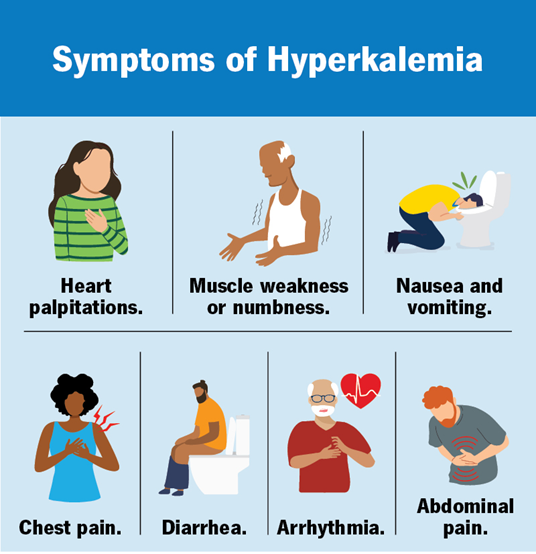A 6-year-old child is admitted with acute glomerulonephritis. What should the nurse expect the urinalysis to show during the acute phase?
Bacteriuria, increased specific gravity
Hematuria, mild to moderate proteinuria
Bacteriuria, proteinuria
High levels of proteinuria, decreased specific gravity
The Correct Answer is B
Choice A reason:
Bacteriuria, or the presence of bacteria in the urine, is not typically associated with acute glomerulonephritis. Acute glomerulonephritis is primarily an inflammatory condition affecting the glomeruli of the kidneys, and it does not usually involve bacterial infection. Increased specific gravity can occur due to concentrated urine, but bacteriuria is not a characteristic finding.
Choice B reason:
Hematuria, or blood in the urine, and mild to moderate proteinuria are characteristic findings in acute glomerulonephritis. Hematuria occurs due to inflammation and damage to the glomeruli, allowing red blood cells to pass into the urine. Proteinuria results from the increased permeability of the glomerular basement membrane, allowing proteins to leak into the urine. These findings are key indicators of glomerular inflammation and damage.

Choice C reason:
While proteinuria can be present in acute glomerulonephritis, bacteriuria is not a typical finding. The condition is primarily inflammatory rather than infectious, so the presence of bacteria in the urine is not expected. The focus should be on the inflammatory markers such as hematuria and proteinuria.
Choice D reason:
High levels of proteinuria and decreased specific gravity are not typical findings in acute glomerulonephritis. While proteinuria can occur, it is usually mild to moderate rather than high. Specific gravity may be increased due to concentrated urine, but decreased specific gravity is not a characteristic finding of this condition.
Nursing Test Bank
Naxlex Comprehensive Predictor Exams
Related Questions
Correct Answer is D
Explanation
Choice A reason:
Monitor your child’s temperature daily: Monitoring temperature is important for children with sickle cell anemia as they are prone to infections. A fever can be an early sign of infection, which can be serious for these children. Normal body temperature for children ranges from 36.5°C to 38°C. However, while monitoring temperature is important, it is not the most critical daily advice compared to ensuring adequate hydration.
Choice B Reason:
Restrict outdoor play to 1 hour per day: Limiting outdoor play is not typically necessary unless the child is experiencing extreme fatigue or pain. Physical activity is generally encouraged to maintain overall health, but it should be balanced with rest and hydration. Therefore, this advice is not as crucial as ensuring the child stays hydrated.
Choice C Reason:
Apply cold compresses when your child expresses pain: Cold compresses are not recommended for managing pain in sickle cell anemia. Instead, warm compresses or heating pads are often suggested to help relieve pain by improving blood flow. Cold can cause vasoconstriction, which may worsen pain and complications.
Choice D Reason:
Offer your child fluids frequently to meet their daily fluid goals: Staying well-hydrated is essential for children with sickle cell anemia. Adequate hydration helps prevent sickle cell crises by reducing blood viscosity and promoting better blood flow. This is the most appropriate and critical advice for daily care.
Correct Answer is A
Explanation
Choice A reason:
Cardiac arrhythmia is a primary clinical manifestation of hyperkalemia. Hyperkalemia, defined as an elevated level of potassium in the blood, can significantly affect the electrical activity of the heart. This can lead to various types of arrhythmias, including bradycardia, ventricular tachycardia, and even cardiac arrest1. The presence of arrhythmias is a critical indicator of hyperkalemia and requires immediate medical attention to prevent life-threatening complications.

Choice B reason:
Seizures are not typically associated with hyperkalemia2. While severe electrolyte imbalances can potentially lead to neurological symptoms, seizures are more commonly linked to conditions such as hyponatremia (low sodium levels) or hypocalcemia (low calcium levels). Therefore, seizures are not a primary sign of hyperkalemia.
Choice C reason:
Dyspnea, or difficulty breathing, can occur in various medical conditions, including heart failure and respiratory disorders. While hyperkalemia can lead to muscle weakness and fatigue, which might indirectly affect breathing, dyspnea is not a primary clinical manifestation of hyperkalemia. The main concern with hyperkalemia is its effect on cardiac function.
Choice D reason:
Oliguria, or reduced urine output, is a symptom of acute renal failure but not specifically indicative of hyperkalemia. While acute renal failure can lead to hyperkalemia due to the kidneys’ inability to excrete potassium, oliguria itself is not a direct sign of hyperkalemia. The focus should be on the cardiac effects of elevated potassium levels
Whether you are a student looking to ace your exams or a practicing nurse seeking to enhance your expertise , our nursing education contents will empower you with the confidence and competence to make a difference in the lives of patients and become a respected leader in the healthcare field.
Visit Naxlex, invest in your future and unlock endless possibilities with our unparalleled nursing education contents today
Report Wrong Answer on the Current Question
Do you disagree with the answer? If yes, what is your expected answer? Explain.
Kindly be descriptive with the issue you are facing.
